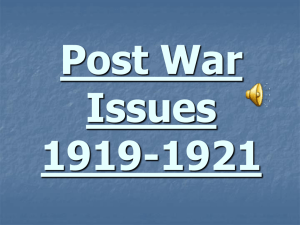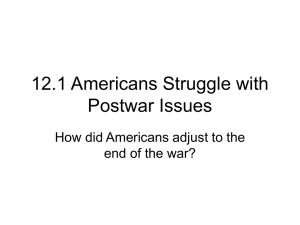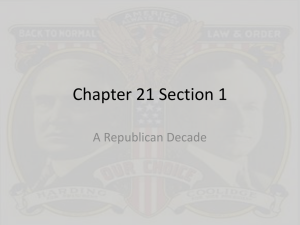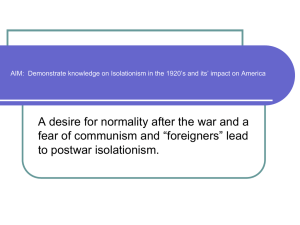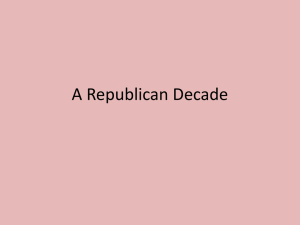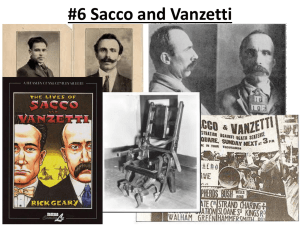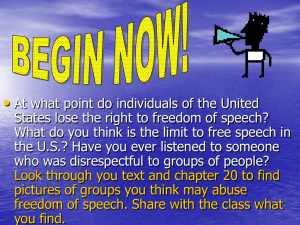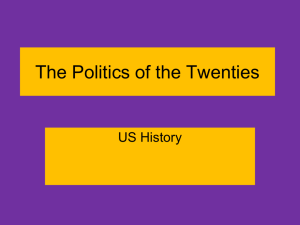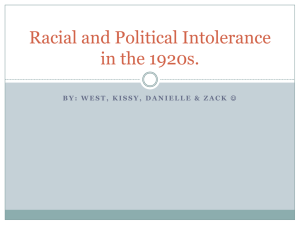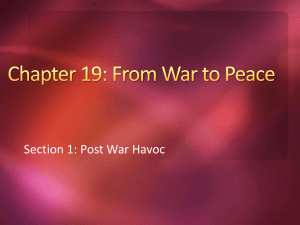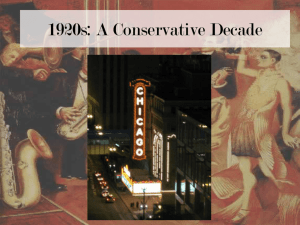3 Fear of Communism
advertisement
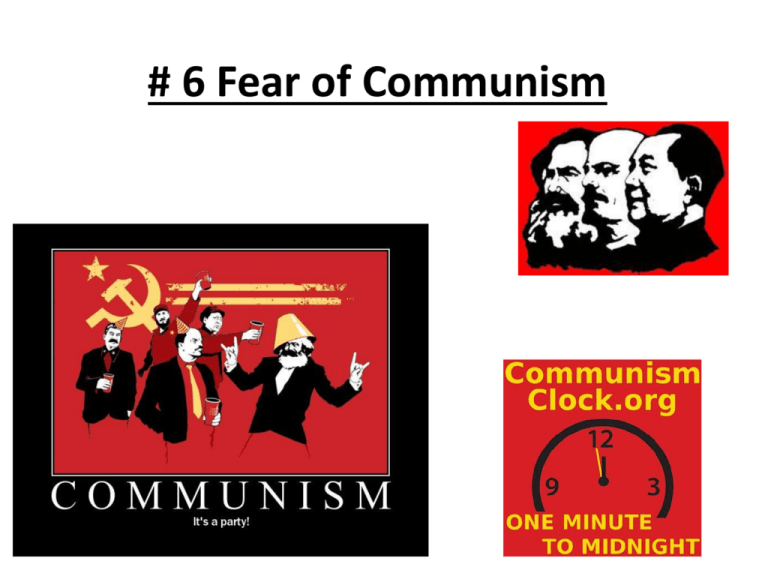
# 6 Fear of Communism Opener: (left side) Define in your own words, what you know or remember from world history last year • Communism: (left side) What events and fears started the Red Scare in the U.S.? • Bolsheviks spread communism- revolution in Russia • U.S. workers striking (could be communists) • Unions (could be communists) • Mail bombs- explodes at Palmer’s house • Blame Communism: • a system of social organization in which all economic and social activity is controlled by a totalitarian state dominated by a single and self-perpetuating political party. – An economic and social system envisioned by the nineteenth-century German scholar Karl Marx. In theory, under communism, all means of production are owned in common, rather than by individuals (http://dictionary.reference.com/browse/communism) • Socialism: on the way to communism, for example: government owning major private businesses, public services (hospitals and healthcare), laws that make rich people contribute more taxes so there is a smaller gap between rich and poor. Has nothing to do with the 1920s, but it’s funny Today, we’re going to learn about what happened to people who believed in socialist ideas right after WWI. • Video Clip- Attorney General Mitchell Palmer and the Palmer Raids • Primary Source Analysis • General Palmer: his goal was to arrest and deport suspected communists in U.S. There were bombings and he suspected the bombers of being communists, he believed there would be a communist attack on May 1st (nothing happened= people doubt Palmer, lost trust in him) • Palmer Raids: arresting and deporting suspected communists. People were not given due process of law, treated as criminals. • Anarchists: don’t believe in any form of government • Red Scare: American fear of communists and anarchists. 1) Read “The Case Against the “Reds”” 2) Answer the analysis guiding questions in your notebook (left side) Homework today: • Complete the Emma Goldman document analysis, answer each question with complete detail. #7 Scaredy Cats The “Red Scare” technically ended in 1920, but in many ways the 1920s continued to be a time of intolerance. (right side) • Why did a new wave of nativism and racism happen after WWI? • What action did the U.S. government take to slow down immigration? Emergency Quota Act of 1921 • Quota: number of allowed units (in this case immigrants) • The objective of this act was to temporarily limit the numbers of immigrants to the United States by imposing quotas based on country of birth. Annual allowable quotas for each country of origin were calculated at 3 percent of the total number of foreign-born persons from that country recorded in the 1910 United States Census. • Exceptions to the law: government officials and their families, immigrants who were passing through the US or visiting as tourists or temporary workers, immigrants from countries in the Western hemisphere, and minor children of US citizens. The Quota Act also did not apply to countries with bilateral agreements with the US on immigration, or to countries in the Asiatic Barred Zone (Left side)#1 Cartoon Analysis: 1) What is happening in the cartoon? 2) What does the funnel represent? 3) What is Uncle Sam doing? 4) Are there any problems with the geography? 5) What is the cartoonists point of view towards the Emergency Quota Act? (Left side) Cartoon Analysis: 1) What is happening in the cartoon? 2) How does the sign show American attitudes? 3) What did the Chinese immigrants bring to America? 4)What is the cartoonists point of view towards the Emergency Quota Act? The New Klan · The goals of the new Klan were to preserve the U.S. for white native-born Protestants. Ku Klux Klan members parading along Pennsylvania Ave. in Washington, D.C., Aug. 18, 1925 · The Klan targeted immigrants, Catholics, Jews, and African-Americans. The Ku Klux Klan reached its greatest strength in the 1920’s, with a membership of over three million people. • Over 3 million down to 50,000 in 1929 because Indiana Klan leader (Stevenson) assaulting his female assistant (death)= brings clarity and reality to the U.S. #8 Sacco and Vanzetti Case of fear for anarchists and immigrants: • Sacco and Vanzetti: known anarchists and atheists (don’t believe in any god), draft dodgers during WWI (unpatriotic) • Accused of robbing and killing the paymaster and security guard at a shoe factory • 7 year trial • Judge and jury are prejudice against the men because they’re immigrants (background) • Protests around the world to show the men’s innocence • Found guilty by jury= given the death sentence by electric chair “Two Good Men” song by Woody Guthrie (1912-1931), folk singer from Oklahoma, sang about the plight of Americans during the 20s and 30s Left side- Song analysis: 1. How does Woody Guthrie feel towards the Sacco and Vanzetti court case and Judge Thayer? Quote lines that back up your argument. 2. How does Woody Guthrie feel towards the men Sacco and Vanzetti? Quote lines that back up your argument. 3. What is the ultimate message in the song that Woody Guthrie is sending to Americans? Quote lines that back up your argument. (Left side)Design a Gravestone Epitaph• Choose either Nicola Sacco or Bartolomeo Vanzetti • Must include: • Describe who they were (some background on their life) • What they were accused of committing • How you believe they should be remembered. The FBI Director: Background on the PositionSince its beginning in 1908, the FBI has been led by a single individual. At first called "Chief," this leader has been titled "Director" since the term of William Flynn (1919-1921). The FBI Director has answered directly to the attorney general since the 1920s. Under the Omnibus Crime Control Act and Safe Streets Act of 1968, Public Law 90-3351, the Director is appointed by the U.S. President and confirmed by the Senate. On October 15, 1976, in reaction to the extraordinary 48-year term of J. Edgar Hoover, Congress passed Public Law 94-503, limiting the FBI Director to a single term of no longer than 10 years
